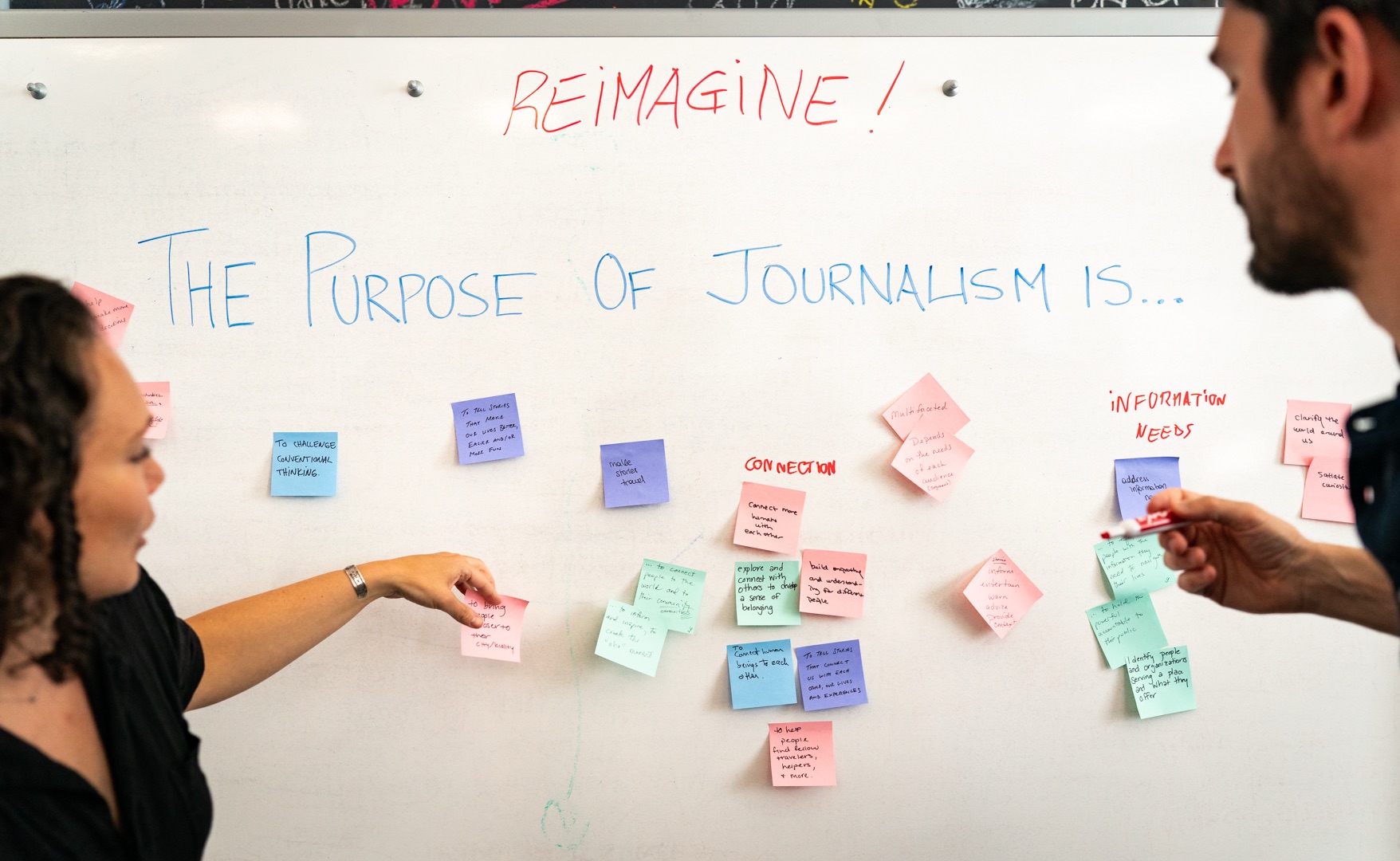Around the beginning of the year, I participated in a Spark Camp, this time themed around design and designers – which was the fourth in a series which has already covered themes like "real-time," "data" and "money" – and hosted in Palo Alto, Ca., on Jan. 11-13.

Hosted in conjunction with the d.school at Stanford University, campers were asked to focus the weekend's conversations around "all of the ways that design — from art, to multimedia, to photography, to mobile/ tablet form factor, to user experience, HTML5 and responsive design — impacts both how we tell stories and how consumers relate to that content."
We kicked off the weekend Friday night by bussing as a group over from the conference hotel to the evening's venue – The Googleplex – for dinner, meet-and-greets, camper introductions and an exercise for generating group discussion topics for Saturday and Sunday sessions.
That evening, campers gave a number of short five-minute presentations in the, now long-time Foo Camp tradition, of Ignite talks. A favorite from the evening was from interaction, visual designer and O'Reilly author, Jen Robbins' talk "It's 1994! There's this new thing called the World Wide Web" and I got up to advocate for designers who are skilled in both web and editorial design in "Your Survival is Designed" again, just like I did at News Foo in December. If interested in watching some, catch them all on the Spark Camp YouTube channel.
Saturday was a long one, and I am still thinking about my favorite discussion from the day on re-designing our work place and work spaces. We spent about an hour dreaming big on physical (and non-physical) newsroom design, sharing our experiences on what's worked and not.

Sunday morning, the d.school's fellowships director, faculty member, and former Washington Post digital design director Justin Ferrell led campers in a crash course in design thinking. We interviewed each other while trying identify real needs, and develop a solution to “redesign the gift-giving experience” for our partner. This exercise allowed us to immerse ourselves for about two hours in all of the fun resources that had been surrounding us the d.school.
For the most part, Spark Camps are as good as the participants make it, with scheduling and management akin to News Foo: lecture free, unconference-style sessions and off-the-record discussions.
The team likes to say that they are striving for "a format that should make you feel like you're at a dinner party." However, with the strictly coordinated, ambitious schedule – early morning bus shuttling from hotel to venue, a very long day, few too many scheduled sessions, etc. – this weekend felt a bit more like "work" than a lovely, serendipitous "dinner party."
I feel quite fortunate to have been invited to participate and given the opportunity to meet so many fascinating new people, yet, I couldn't help but feel like there was a missed opportunity. How often will a group of creative makers like the ones gathered this weekend, be in the same room again? Perhaps we could have spent the weekend making something together, rather than talking, talking, talking …
You can follow Spark Camp: Design campers on Twitter.
About the author





